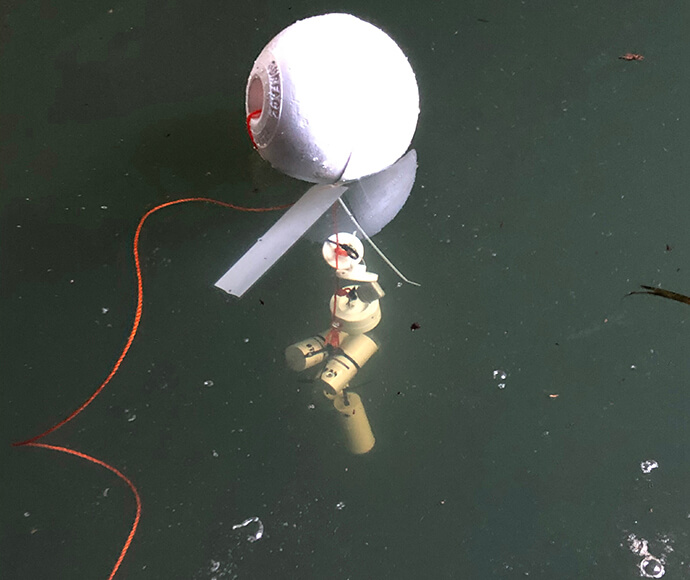Passive samplers are small discs that accurately detect pesticides and other chemicals in both air and water. When installed in the environment they can provide an early warning system that can help us protect our environment.
Chemicals and pesticides are commonly used around the home and in various industries including food production. But in the environment, they can reduce air and water quality, harm our ecosystems and us.
The challenge
Our Environmental Forensics Team were asked to help detect chemicals associated with the horticulture industry in waterways of the Hearnes Lake catchment on the NSW mid-north coast.
A key challenge was to deliver cost-effective monitoring technology that could pick up pesticides quickly when they spill into the environment.
To help protect our ecosystems and the community from these compounds we need to know when and where chemical ‘hot spots’ occur.
Previous technology has had limitations – detecting chemicals in the environment was sometimes missed and it was often impossible to determine the source.

In 2019, we began testing a new technology called passive sampling in the waterways of the mid- and far-north coast.
This was mainly in response to community concerns about water quality and the misuse of chemicals in catchments with intensive agriculture.
We collaborated with the NSW Environmental Protection Authority and universities to explore potential approaches for monitoring waterways. Through this work we developed passive sampling discs, which collect chemicals on the surface of a membrane. The discs are robust enough to be left in waterways for extended periods.
We undertook an extensive water testing program to compare the new technology to the standard water sampling regime. This involved:
- using the traditional grab sampling method to collect water samples twice, once when we first went out into the field and another several weeks later, after which samples were analysed in the lab
- using the new approach to deploy passive sampling discs in 8 waterways around Woolgoolga and Coffs Harbour for 3 weeks, then collecting the discs for analysis in the lab.
Standard grab sampling provides a snapshot of data in time. This can limit what is detected because a sample is taken at a particular location at a specific time
Passive sampling discs give a more complete picture of what’s happening in the environment because they collect a sample over a 3-week period. This is how passive sampling technology enables us to detect and monitor chemicals more accurately in waterways.
Our passive water samplers detected 9 different chemicals, whereas no chemicals were detected with the traditional grab sampling approach.
This project has delivered a:
- clearer and more accurate picture of pesticide movement through the environment
- greater understanding of how chemicals in our waterways impact water quality, ecosystems and the broader environment
- better understanding of what chemicals are being used in particular areas, which helps inform the design of community education campaigns and compliance actions.
'I hope that this project leads to improved awareness in the community about how chemicals can move through the environment,' said Chris Doyle, team leader.
'If you apply a chemical in your garden, your paddock or around your home – it may end up a long way from there. This emphasises that it’s important to be careful and follow instructions [when using chemicals].'
We plan to embed passive sampling technology in our routine air and water quality monitoring programs.
We also plan to expand the scope of the sampler discs to detect other contaminants like heavy metals and per-fluoroalkyl and poly-fluoroalkyl substances and pharmaceuticals.